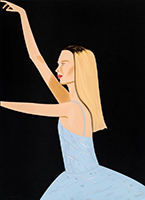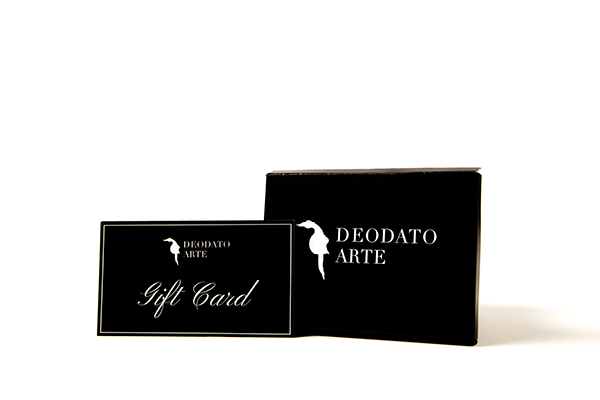
When we think about classical or Renaissance art, we immediately think of the art that is distant from us, from our culture and from contemporary art. This is only partially true.
Contemporary works are in fact often a result of both contemporary society and the studies and works of the great artists of the past.
Discover 5 contemporary artists who have been inspired by the great works of the past
Here are some of the contemporary artists who have decided to reinterpret classical art in their own personal style:
- Venus de Milo revisited by Daniele Fortuna
- The Gospel according to Banksy
- Tomoko Nagao and her Last Supper
- The (re)birth of Venus by David LaChapelle
- Love me or like me: Canova's classic for Mr. Savethewall
Venus de Milo revisited by Daniele Fortuna
Made in 130 BC, the Venus de Milo by Alexander of Antioch has often been used as a source of inspiration by the most famous and important artists of the past centuries. Fair to say that the statue of Venus was the source of inspiration for Eugène Delacroix's painting Freedom Leading the People, a symbol of the French Revolution and France; even Salvador Dalì was impressed by the Hellenistic work and dedicated his work Venus de Milo with Chest of Drawers to her in 1936. Among contemporary artists, Daniele Fortuna, a well-known Italian artist known for his mastery in wood sculptures, could not resist the fascination of the most famous Greek sculpture.
In fact, Daniele Fortuna has reinterpreted the sculpture in his own style; made of wood with staggered levels and bright colours, Fortuna has reinterpreted the statue by naming it Venus Clouds. The artist is known for drawing inspiration from the statues of antiquity and the most famous subjects of ancient Greece, but reinterpreting them in a modern and up-to-date key, thus allowing the ancient works to live again today. Fortuna's sculpture is coloured light blue and detailed with white clouds covering her entire body.
"If you look at the whole history of art, there has always been a redoing of something that already existed before; and so, instead of looking for absolute originality, in my opinion we need to focus on what we have (also because in any case the cultural heritage we have is fantastic and should be paid homage to) and make it more contemporary by updating it." - Daniele Fortuna
From the marble of the original statue located in the Louvre Museum in Paris, to the wood of Daniele Fortuna's sculpture, the artist wanted to "shorten the distance" with classical art, which, according to him, is seen by many as intangible and unreachable, precisely because of its chronologic distance from us but also because of the "sacralisation" that this art has achieved over the years.
The Gospel according to Banksy
The most appealingly irreverent contemporary street-artist on the scene, Banksy, wanted to criticise consumerism in his work Sale Ends Today by referring to biblical scenes typical of the 16th and 17th centuries.
Although the reference to religious scenes is evident, the work lacks religious connotations; the four tormented women in the painting prostrate under a sign that reads Sale Ends Today. The women's dresses, characterised by rich draperies with soft folds, and their bodies are realised in the typical Street Art style, i.e. the black and white stencil, which gives volume to the figures, thus achieving a three-dimensional effect. The figures are thus precise, a feature that contrasts with the inscription Sale Ends Today made in a thick, somewhat childlike font.
The subjects of the work are in 'mourning' for the closing of the sales. These characters are inspired by those in the Gospel, who are often depicted as grieving at the foot of the Cross with Jesus in classical iconography. However, Banksy decides to place the bright red sign at the centre of the work rather than the traditional Jesus Christ, this is because the street-artist wants to target the culture of consumerism and its unstoppable growth, which has given it a quasi-sacred status. The work Sale Ends Today is thus a powerful critique of 21st century capitalist society and its new and ephemeral gods.
Through the combination of Renaissance icons and effective slogans, Banksy criticizes today's consumerism, the status of art and its exposure in society. His analysis of our materialistic society is in fact expressed through an almost religious fervour with which the whole world looks at the true idol, consumerism.
Tomoko Nagao and her Last Supper

Known and appreciated all over the world, Leonardo da Vinci's The Last Supper has become a true art icon. This great classic of Renaissance art history has also been reinterpreted by numerous contemporary artists. Among them the Japanese artist, Tomoko Nagao, wanted to pay tribute to the Italian work by creating her version in Micropop and Superflat style.
The oil fresco preserved in the refectory of the Benedictines in Santa Maria delle Grazie in Milan is interpreted in a Pop and contemporary key by Tomoko Nagao. The work The Last Supper depicts Jesus and all the Apostles eating a McDonald's dinner on a table set with an Ikea tablecloth together with other references from contemporary culture that are very familiar to us, such as Nutella, the low-cost airline EasyJet and Coca-Cola.
The artist studied the composition of her work with the help of Mario Taddei, one of the greatest international experts on da Vinci's work. Tomoko decided to keep the original composition,
the faded colours and all the objects in the fresco while enriching the composition with various symbols and references to contemporary society.
The (re)birth of Venus by David LaChapelle
Inspired by the Italian Renaissance masterpiece, photographer David LaChapelle wanted to create a shot strongly inspired by Botticelli's work but with a contemporary twist. Since the Renaissance work is entitled Birth of Venus, LaChapelle wanted to call his work Rebirth of Venus.
Everything in LaChapelle's shot is reminiscent of the famous work: from the posture and positioning of Venus at the centre of the composition, to the presence of Zephyrus and the iconic seashell, which this time does not act as a stage for Venus but is also modernised and perceived in a unique way.
Rebirth of Venus is a perfect example of how a modern photographer can recreate historical art while depicting the contemporary culture and fashion trends that surround us today. Obviously, the composition and characters have been reinvented to reinterpret modern-day culture.
The photographer's works always manage to skilfully mix the influences of classical art, both Renaissance as in this case but also Baroque, with oneiric-surrealist influences and those of contemporary technology.
Love me or like me: Canova's classic according to Mr. Savethewall
Neoclassicism icon Psyche Revived by Cupid’s Kiss (Amore e Psiche) by Antonio Canova was also created thanks to Canova's inspiration from the Apuleius fable of the same name.
The Italian street-artist, Mr. Savethewall, wanted to pay tribute to the fable and Canova's sculpture group by painting a canvas entitled Love Me or Like Me in which the two protagonists of the story were represented in a modern key; Psyche appears in fact while holding a smartphone to immortalise the kiss with the Cupid.
The artist thus reinterprets a great classic with skill and elegance, inserting modern-day elements that make the work resolutely contemporary.











 Register
Register Wishlist
Wishlist Contact Us
Contact Us







